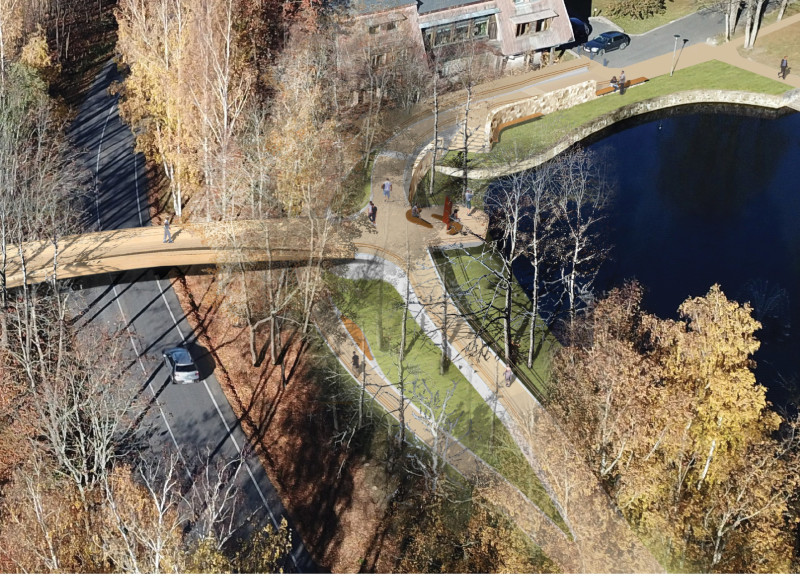5 key facts about this project
The design proposal for GAUJA NATIONAL PARK demonstrates a careful blend of natural features and constructed elements. It is situated among notable landmarks, including a church and a dam, and is enriched by diverse tree cover. The purpose is to create a space that invites visitors to explore and reflect on the beauty of the environment. The overall concept emphasizes movement through the landscape, as well as points for contemplation.
Approach Ramps
The approach ramps are essential to the design, positioned along the eastern embankment to bring users to the adequate height for vehicles passing beneath. These ramps ascend gradually to the crossing level, enhancing the experience of walking through the park. As visitors navigate these pathways, they gain new perspectives on the natural surroundings, framed by the trunks and leaves of the trees.
Lookout Point
A lookout point located over the dam adds depth to the experience. This area includes seating and informative displays, encouraging visitors to take a moment to appreciate the views. By providing an inviting space for rest and learning, the lookout fosters a connection between people and the environment, enhancing their understanding of the park.
Bridge Structure
The bridge serves as a pivotal feature, designed as a simply supported metallic beam with parabolic cords connected by transversal ribs. This structural choice ensures both stability and a pleasing appearance. The careful arrangement of the cords creates a distinctive shape that aligns with the natural contours of the landscape and defines the available deck area.
Material Choices
Material selection plays a significant role in defining the project. Key components include metallic beams, parabolic cords, and transversal ribs, chosen for their reliability and strength. Additionally, thermo-treated timber slats provide cladding for both the upper and lower surfaces of the bridge, reinforcing its relationship with the surrounding natural elements.
The design culminates in a structure that fits well within the park's landscape. It offers functionality while maintaining a direct connection to its environment, inviting visitors to pause, reflect, and appreciate the beauty around them.



























